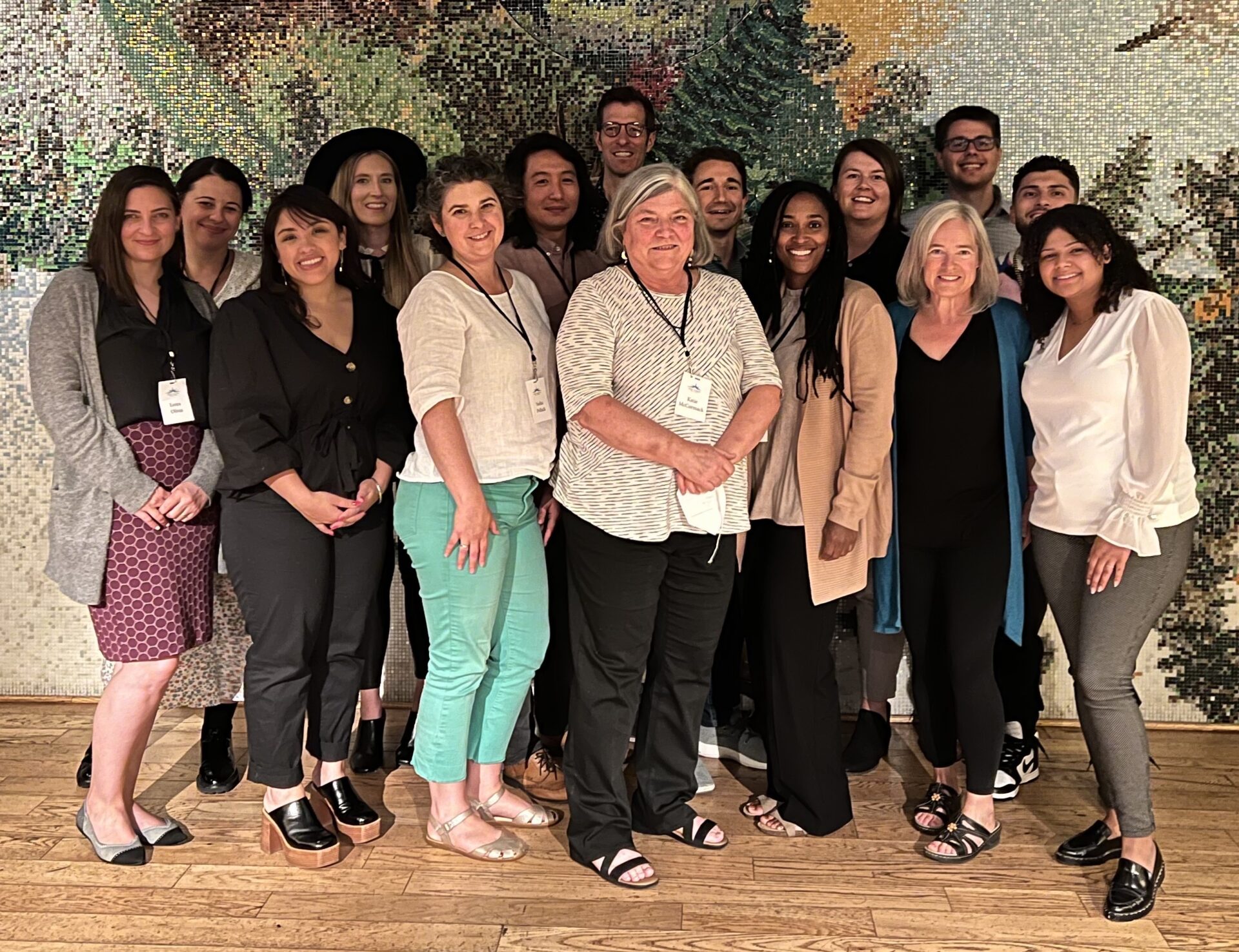
Note: For the past four decades, Katie McCormack has been a valued leader and thought partner in the climate and clean energy movement, particularly in the West. She is retiring from her position as our Program Director, West Policy, so we asked her to share some thoughts about her work, her fellow advocates, and her hope for the future. – Jason Mark, CEO, U.S. Energy Foundation
I’m retiring at the end of this month after having spent more than 40 years of my career working to advance clean energy solutions. More than two decades of those years were spent with the U.S. Energy Foundation (EF), working alongside incredibly smart, passionate, and dedicated advocates who shared the common goal of pursuing a cleaner, better energy source than climate-altering fossil fuels. There’s much more to say than can be captured in a blog post, but what follows are a few highlights and lessons learned from my experiences, which I am sharing at the request of my colleagues. I’m grateful to everyone I’ve learned from, and for the tremendous accomplishments we have achieved together.
In 2007 (the year I joined EF full-time), solar installations were at about 12 gigawatts (GW) of total energy generation in the U.S. Solar installations are now more than 10 times that, installed across the country (over 130 GW), with cost declines exceeding 60 percent over that same period.
My first EF project was developing a strategy to eliminate barriers to distributed energy resources. That shifted to developing a strategy to regulate those resources’ emissions to prevent a wave of dirty diesel generators—and then I turned back to seeking policies to accelerate adoption of clean distributed energy resources. I view this as a hallmark EF approach that has since been replicated across the country: Being pragmatic about strategy and shifting (even dramatically) when necessary. I learned the value of the insights of EF’s campaign experts to adjust for and anticipate changes to strategy based on market conditions, technological advancements, what the local community wanted, and how public and decision-maker opinions influence policy design and advocacy; I am grateful for what they taught me, and I continue to learn.
My work at EF also included working closely with committed funding partners, and over the years we tried some new and challenging approaches—venues, policy designs, collaboration models—knowing that they would sometimes be unsuccessful experiments. What we learned improved strategies either way, but those experiments have more often been successful than otherwise. For example, the desert solar working group we supported brought together conservation and clean energy public interest groups and companies to identify principles for project development and siting. Sometimes difficult conversations resulted in shared principles that the group communicated to decision-makers—even if those agreements were sorely tested in specific project-development decisions.
Collaboration is often essential to success. Coalitions have become more diverse and inclusive and more skilled in engaging both partners and opposition. This is part of current planning to deliver on our community’s diversity, equity, and inclusion ambitions, including strong implementation of new federal funding and Justice40 commitments.
The best part of my time with EF was the opportunity to work with and support an amazing group of advocates and frontline organizations (not discounting for a moment the privilege of working with EF counterparts across the country and particularly on the West program team, and our wonderful board of directors). I greatly appreciate their commitment, creativity, and insights. I believe EF takes “service to the field” seriously, and operates with deference to grantees’ expertise. As with our solar campaign example, many other campaigns were generously supported by funders who understood the importance of long-term clean energy strategy and in giving EF grantees and allies the credit. And in dozens of other instances over the past 20 years, I’ve seen that their results are worth celebrating and already are ushering in a cleaner energy future.
Advocates were the ones who led on clean energy policy—with an impressive track record. For example, renewable energy standards moved from policies featuring what now seem like low targets that frequently excluded public power, to success in incorporating incremental increases in the renewable power requirements and targets that applied to all electricity providers. There are now six states in the West (seven counting Hawaii) with 100 percent clean power policies, accounting for fully 85 percent of the western power market.
Being pragmatic about strategy, collaboration, and experimentation seem to be hallmarks of future work. I trust that grantees will combine innovations in policy design and campaign strategies with diligent implementation of prior progress across the West. Building clean power and grid infrastructure to meet western states’ 100 percent clean goals is a heavy lift, given the diversity of stakeholders with strong—but not necessarily complementary—views.
I know that advocates, funders, and allies will continue to achieve significant—and lasting—energy victories on the path to a 100 percent net-zero emission U.S. economy. Working with this community has been a blessing and a privilege.
